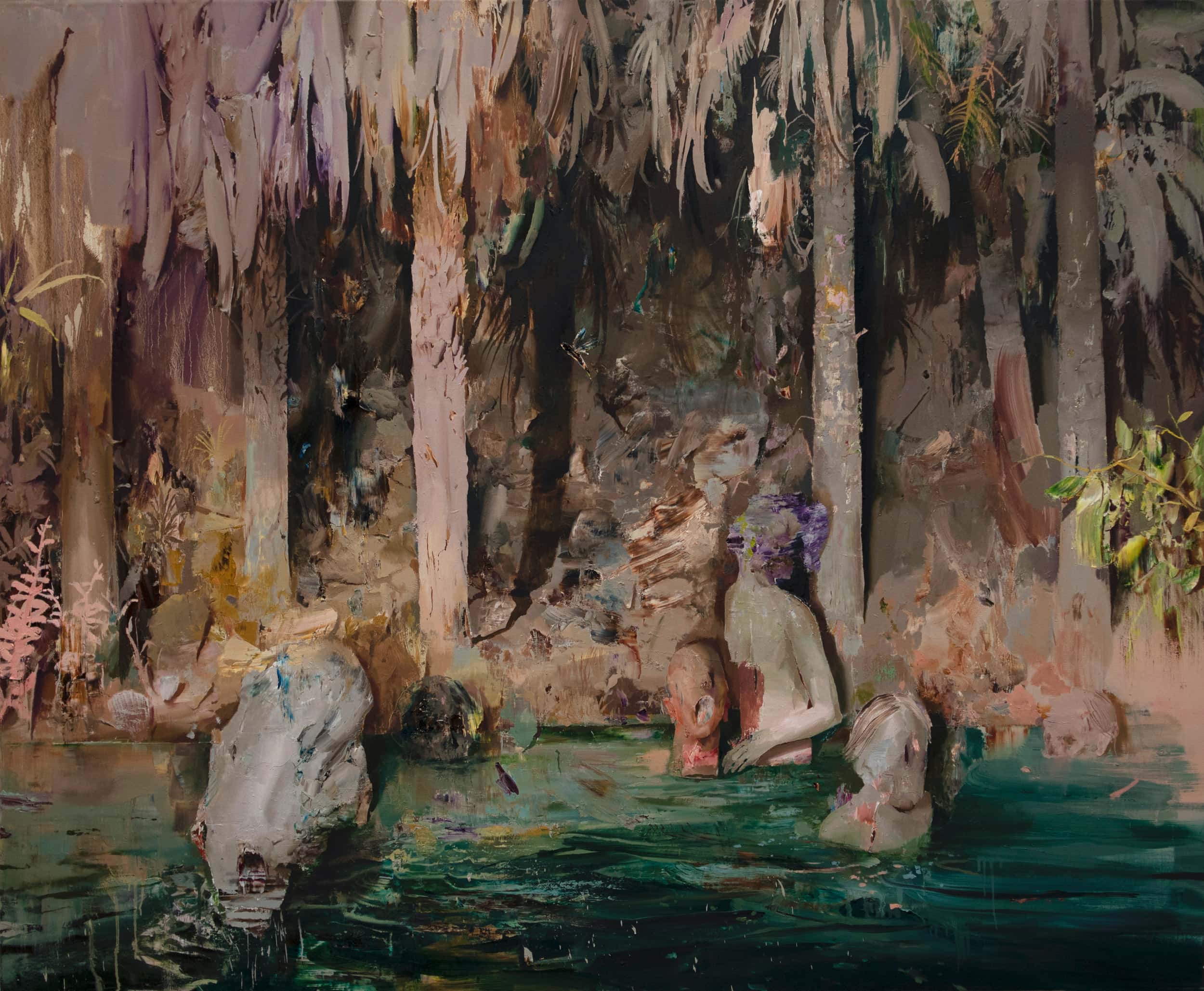Hamid Yaraghchi is interested in the interplay between compulsion and abjection within his works. The Berlin-based artist describes his works as having a ‘fascination with the terrible’, but elevating such questionable or troubling imagery to a new state in which it is dislodged from its source and re-investigated through his own magical interpretation. “Although they are familiar to us, they appear transformed,” he states.
The works seem best described as illustrating so-called ‘in between’ states; between infrastructure and nature, body and soul, reality and subjectivity. There is a fascination with darkness, but also with light, since colour and brightness are just as important here: when used sparingly, their touch is instrumental in elevating a painting to these near-transcendental states.
Our own subjective perception, bias, and history clouds the imagery, and Yaraghchi purposely situates his work in that hypnogogic state, precisely between ‘awake and asleep’, whereas as viewers, our interpretation of these complex images is where they really begin to deconstruct and show their inherent beauty. They function on a few levels – primarily, how we receive the information he is selecting to present to us, and how we read them as paintings – the brushwork, the decision-making, the additions and subtractions.
Yaraghchi states that above all visual art possibilities, he is interested in ‘creating a place to symbolically explode reality.’ The subject matter is often morbid or off-putting: Yaraghchi bases his work on images that are of historical, religious, or social importance to reference the dark fascination human nature has with such imagery. It is this same fascination that once drove Andy Warhol to screen-print a car crash, or Paul McCarthy to make a lifelong career of the grotesque. Above all, Yaraghchi’s work identifies those sparks of enlightenment within the darkness – precisely where these sparse moments of beauty, colour, and transcendence spark.






